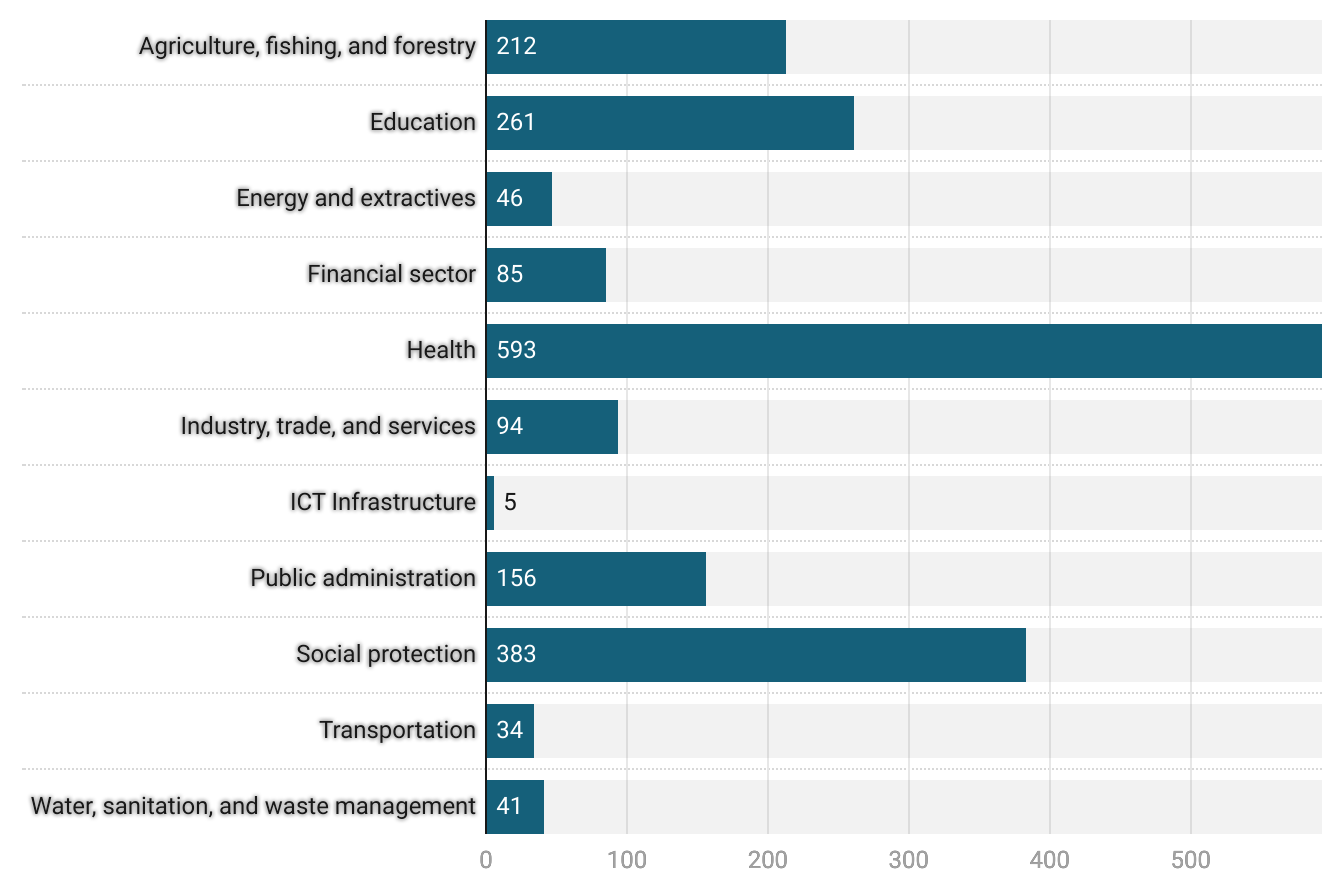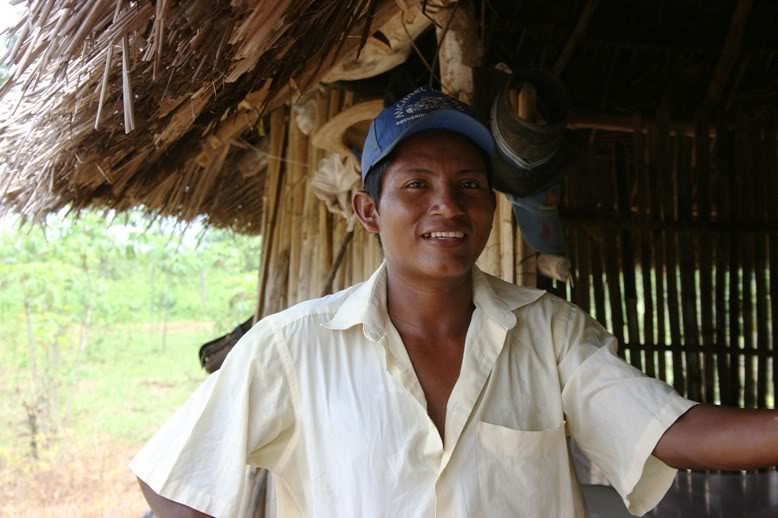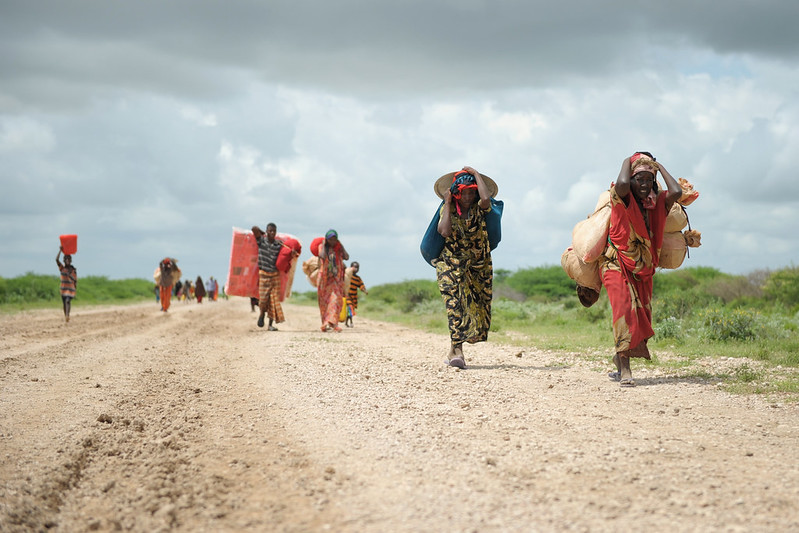In a blog earlier this year, we shared how 3ie’s Development Evidence Portal (DEP) offers insights on the 'state of the evidence' by allowing us to study which regions, countries and sectors are the most researched and in what way. As we dig deeper into the data, we realize every region has its own unique trends. In this blog, we provide an overview of Latin America and the Caribbean (LAC), which ranks third in terms of the number of impact evaluations – with 1910 records on the DEP.
Four countries with high volume of evidence
In the LAC region, evidence is concentrated in Brazil, Mexico, Colombia and Peru, each boasting over 100 impact evaluations (IEs). Collectively, nearly 70% of IEs from LAC were conducted in one of these four countries. Outside of these countries, evidence becomes much more scarce. Only six other countries (Guatemala, Argentina, Ecuador, Chile, Nicaragua, Bolivia) have been a part of 50 IEs or more. Very few evaluations have been conducted within the Caribbean with a total of only 95 IEs available for this sub-region.
Figure 1. Country-wise break-up of number of impact evaluations
Health sector domination continues
In another key trend, also seen across other regions, health is the dominant sector in evaluation research in LAC — with 31% of IEs evaluating a health intervention. The other sectors accounting for more than 100 IEs each are: social protection; education; agriculture, fishing and forestry and public administration. Looking at trends within the region, for both South America and Central America (including Mexico), health and social protection are the most populous sectors, while in the Caribbean, health and education are the most populous sectors with only 8% of IEs in the social protection sector.
Figure 2. Impact evaluations by World Bank sectors
Studies from largescale programs stand out
Progresa, implemented in Mexico, and Bolsa Familia, implemented in Brazil, stand out as two largescale programs with a large number of evaluations – 73 and 33, respectively. Progresa, offering households a cash transfer conditional on school attendance and preventative healthcare, straddles the health, education, and social protection sectors. Its randomized implementation has allowed many researchers to evaluate its impacts on a range of outcomes. Meanwhile, Bolsa Familia, Brazil’s flagship social protection program, provides cash transfers conditional on health and education requirements. Researchers commonly use statistical matching to evaluate the program’s impacts, while regression discontinuity has also been used, a design well placed to evaluate programs with clear eligibility cut-offs.
Research on biodiversity interventions lags
Despite the region’s prevalence as one of the world’s leading areas for biological diversity and forest coverage, there are relatively few IEs focused on evaluations of programs dedicated to counteracting deforestation and habitat loss. Only 103 IEs (5%) focus on SDG 15 – Life on land – while only 118 (6%) focus on forestry. Further, there are only 16 IEs that evaluate a REDD+ (a global framework encouraging countries to reduce emissions and advance forest management) intervention. This is a surprisingly low figure given LAC receives 57% of REDD+ finance.
While a variety of funders have supported evaluations within LAC, the programs have overwhelmingly been implemented by country governments. Outside of country governments, key program funders for the region include the Inter-American Development Bank, the World Bank, the National Institutes of Health, USAID and the Bill & Melinda Gates Foundation.
In an era marked by complex, multifaceted challenges, these evaluations provide a basis for evidence-based decision-making. We invite you to join us in exploring the DEP platform to discover new trends underlying the impact evaluations in the LAC region. Through this portal – which remains a global public good – we can together unlock a wealth of insights about research in different parts of the world.
For more information on DEP, or how to use the platform for various purposes, write to us at info@3ieimpact.org
Comments
Hi Tony,
Many thanks for your question. This blog and the overview it provides is inclusive of the evidence base of the Caribbean region on the DEP. As the DEP utilises the World Bank's country and lending group classifications, many Caribbean states are actually deemed high-income and so are not eligible for inclusion on the DEP. We also see only a small number of impact evaluations from within the region, though you can see on the map that there are 35 in the Dominican Republic, 30 in Haiti and 27 in Jamaica.









When is the data for the Caribbean ..